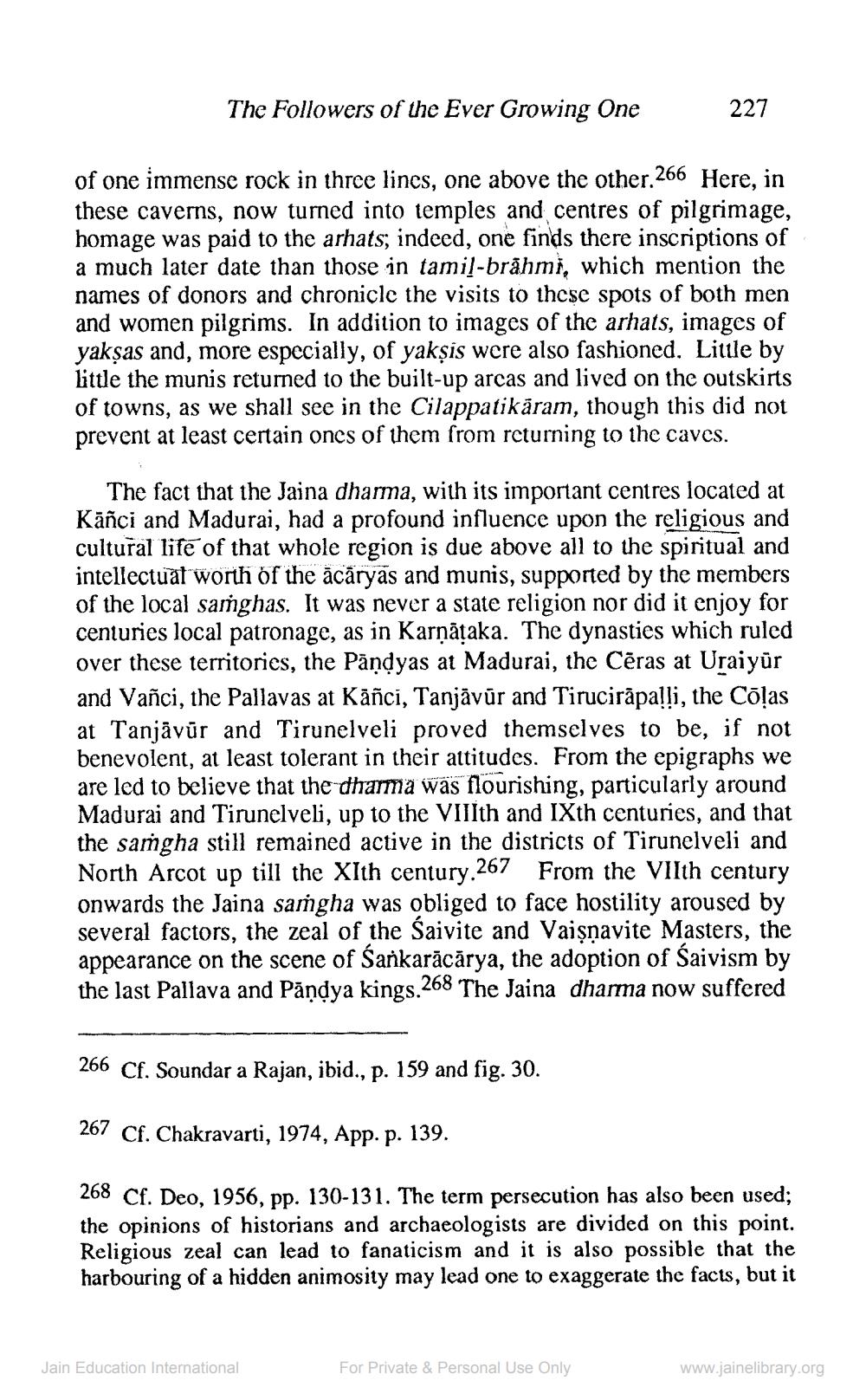________________
The Followers of the Ever Growing One
227
of one immense rock in three lines, one above the other. 266 Here, in these caverns, now turned into temples and centres of pilgrimage, homage was paid to the arhats; indeed, one finds there inscriptions of a much later date than those in tamil-brāhmi, which mention the names of donors and chronicle the visits to these spots of both men and women pilgrims. In addition to images of the arhats, images of yakşas and, more especially, of yaksis were also fashioned. Little by little the munis returned to the built-up arcas and lived on the outskirts of towns, as we shall see in the Cilappatikāram, though this did not prevent at least certain oncs of them from returning to the ca
The fact that the Jaina dharma, with its important centres located at Kāñci and Madurai, had a profound influence upon the religious and cultural life of that whole region is due above all to the spiritual and intellectuat worth of the acāryas and munis, supported by the members of the local samghas. It was never a state religion nor did it enjoy for centuries local patronage, as in Karņāțaka. The dynasties which ruled over these territories, the Pāndyas at Madurai, the Cēras at Uraiyūr and Vañci, the Pallavas at Kāñci, Tanjāvũr and Tirucirāpalli, the Colas at Tanjävūr and Tirunelveli proved themselves to be, if not benevolent, at least tolerant in their attitudes. From the epigraphs we are led to believe that the dharma was flourishing, particularly around Madurai and Tirunelveli, up to the Viilth and IXth centuries, and that the samgha still remained active in the districts of Tirunelveli and North Arcot up till the Xlth century. 267 From the Vilth century onwards the Jaina samgha was obliged to face hostility aroused by several factors, the zeal of the Saivite and Vaişnavite Masters, the appearance on the scene of Sarkarācārya, the adoption of Saivism by the last Pallava and Pāņdya kings.268 The Jaina dharma now suffered
266 Cf. Soundar a Rajan, ibid., p. 159 and fig. 30.
267 Cf. Chakravarti, 1974, App. p. 139.
268 Cf. Deo, 1956, pp. 130-131. The term persecution has also been used; the opinions of historians and archaeologists are divided on this point. Religious zeal can lead to fanaticism and it is also possible that the harbouring of a hidden animosity may lead one to exaggerate the facts, but it
Jain Education International
For Private & Personal Use Only
www.jainelibrary.org




